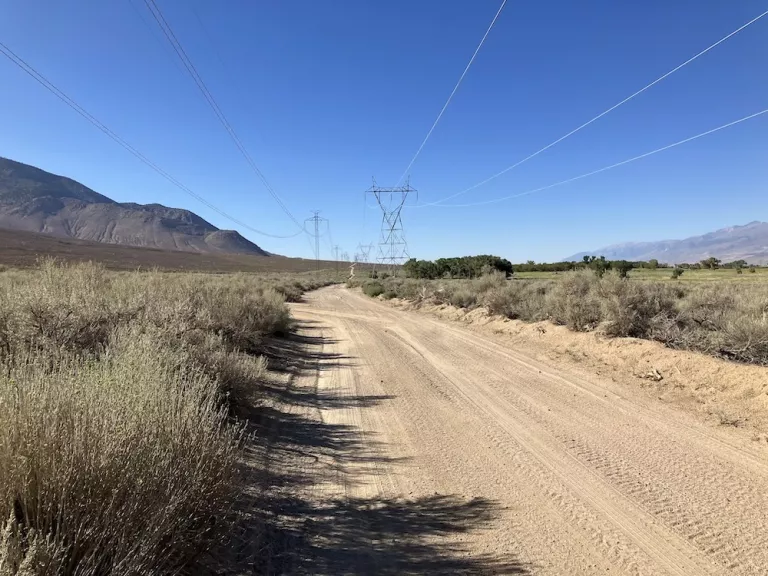The legislation for the pilot Adventure Trails program (CA SB402, 2019) sunsets at the end of this year. It allowed roads to be designated "combined use" for up to 10 miles in just Inyo County, 7 miles more than the DMV regulations allow. Combined use allows non-street legal vehicles to drive on county roads, town streets, and highways. The Range of Light Group and many other groups and individuals opposed the Adventure Trails program because of the impacts to public lands, cultural resources, and wildlife by those who choose to drive off-trail. Now, a regional version of an OHV trail is in the works. It is the Towns to Trails project run by Alta and MLTPA with funding from the Sierra Nevada Conservancy to get it started. The goal of the Towns to Trails project is to provide a multi-use, off-highway route from Olancha to Tahoe which will connect with a mountain bike-focused region in Butte County. The question is, who is this project really for? That isn't clear, and should be. Multi-use means one trail for all users from dog walkers to equestrians, to dirt bikes and Razors. Because the routes will be multi-use, Off-Highway Vehicles (OHVs) and dirt bikes may end up being the main recreational users of this route. Gravel and e-bikes might also take advantage of the route. It has been suggested people could travel the whole route and camp or stay in towns along the way or just go out for a day have lunch in another town and return. It sounds great until you look at the proposed routes.
Last September, 2023, there was a series of public outreach meetings to get the public's input. The routes were computer generated routes that went into wilderness areas, up steep mountainsides, into roadless areas and created new roads. Those draft maps were way off the mark. In June of this year, the Towns to Trails team again conducted public outreach; one in Markleeville, one in Mammoth, and one in Bishop. This time the maps were more realistic. The Towns to Trails team stuck to existing roads and trails and didn't create new ones (but they did). They said the routes presented were just ideas for potential routes and not set in stone. However, what is set in stone at this point is the concept that there should be an off-pavement route from Olancha to Tahoe.

The maps were not made available before the outreach meeting and aren't available now. You had to attend an outreach meeting to see the routes. The final routes will be chosen by Alta and MLTPA staff with just that one hour of public input from those few who showed up at those meetings. The maps will be released by the end of the year and made public then. If the public has concerns about the final routes, they will need to let the Eastern Sierra Council of Governments know. There is no money in the grant for a public review of the final maps or to make further changes to them. The council plans to look for funding to move forward with the project; to put up signage, put in needed infrastructure i.e., bridges, campgrounds, armoring water crossings, etc.
There were 24 maps. It was hard to tell exactly where some of the routes were if they weren't on familiar roads or streets. You can't zoom in on a paper map. Some segments were marked as existing where there isn't an existing road or trail. Some routes followed unofficial/user created roads or trails. Some routes went through private property, tribal land, and conservation easements, and even a wildlife refuge. A clear motorized route from town to town has not been worked out, yet. Each leg of the route has issues. The routes that are on county roads, city streets, and highways will need to be designated as combined use to allow green sticker vehicles. Most of the routes north of Bishop will seriously impact wildlife and some of them should be taken off the table or they will undo decades of conservation efforts.
The goal of connecting all the towns using scenic dirt routes may not be possible. That may be clear from this feasibility study, but with the wider regional support for the project, the project probably won't be dropped. It may end up adding some loops and routes here and there that would add to the recreation options of the Eastern Sierra. If a through route is worked out from Olancha to Tahoe, then we will have a significant increase in visitors, in trash and waste, accidents, and dust. Travel on dirt roads will significantly add to the air quality problems in the Owens Valley and add dust to the rest of the Eastern Sierra. The dust will either be volcanic with fine bits of silica or glass or it will be alkaline. Neither is good to breathe. We will need more patrols and more enforcement. Aside from those human impacts, an OHV 395 trail system will have a huge impact on wildlife, nature, ambient sounds, and the natural beauty that brought us here.

A multi-use route leads one to believe this project will be good for everyone, but it appears to be catering to one recreational group, one demographic, to the detriment of everyone else.
If you want to see photos of the maps, let us know via email at chairrolg@gmail.com. Comments will probably not be accepted, but you can see the routes that were presented in June.
By Lynn Boulton